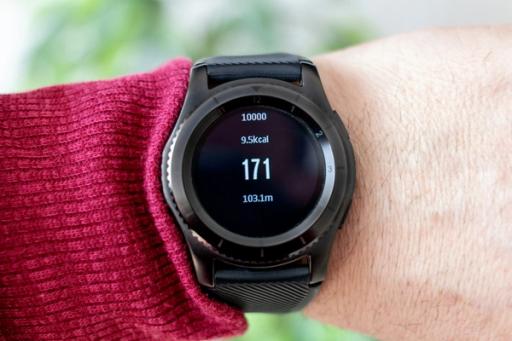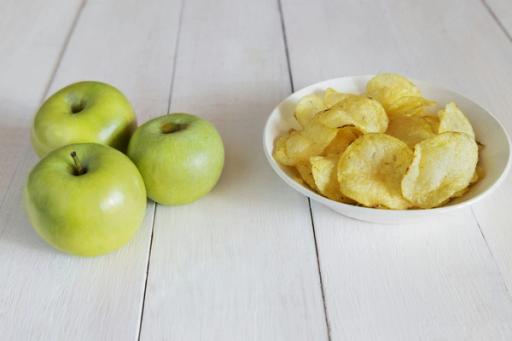
You decide to skip breakfast again. You tell yourself that you’ll make up for it at lunch. But when noon rolls around, you’re so hungry that you forget your health goals and dig into the leftover birthday cake in the breakroom instead of the balanced meal you packed. You start wondering, how are calories measured, and vow to do better tomorrow, but the same scenario happens daily.
How lunch fits into your day can make or break your health goals. So, how many calories should lunch be? This article will help you confidently plan lunches that align with your fitness goals, energize you, and support sustainable weight management or muscle building.
Cal AI’s calorie tracker can help you achieve this objective with ease. By tracking your calorie intake and output, the tool enables you to figure out exactly how many calories you should aim for each day to reach your specific goal. Then, it breaks it down so you can easily plan meals, including lunches that help you hit your targets.

A calorie is a unit of measurement. One calorie is the energy it takes to raise the temperature of one kilogram of water by one degree Celsius. Our bodies need energy to function. And we get that energy from food. The number of calories in food follows this equation: carbohydrate + protein + fat = total calories.
Each of these macronutrients provides our bodies energy in different amounts per gram:
So, if you’re looking at a food label that says there are 20g of carbohydrates, 10g of protein, and 5g of fat in a serving of food, that food has about 140 calories. (The more you interact with calories and macronutrients, the easier to remember.)
So, how many calories should you eat? Many factors go into determining your calorie needs. Your age, weight, gender, height, and activity level all play a role. According to dietary guidelines in the United States, adults 21 years old and older should consume anywhere between 1,600 and 3,000 calories per day.
The U.S. Department of Agriculture (USDA) shares its recommended calories per day:
Calories Per Day for Women and People AFAB:
Calories Per Day for Men and People AMAB:
Remember that these calorie recommendations are for people who are at a normal weight. If your weight is above the normal range for your height and your goal is weight loss, you need to consume less. A deficit of 500 calories can provide a weight loss of 1 pound per week.
Caloric needs are highly individual and can change over time. As you age, your metabolism slows down, and your calorie needs decrease. Other factors that influence calorie needs include:
Caloric needs can also fluctuate depending on metabolic changes during pregnancy, lactation, and regular exercise.

Lunch plays a crucial role when it comes to losing weight. Eating a healthy lunch helps sustain energy and nutrition levels throughout the day. This is particularly important for weight loss, as reducing calories too quickly can leave you fatigued and nutrient-deficient.
If you’re looking to shed pounds, a nutritious lunch can help stabilize blood sugar levels, prevent cravings, and keep you on track to meet your weight loss goals.
Whether you're looking to lose pounds or simply manage your weight, a calorie calculator helps determine a good amount of calories for lunch. Average lunch calories are dependent on both your diet and level of activity.
To discover how many calories adults need, there are multiple factors such as age, gender, height, weight, and level of activity, explains the Academy of Nutrition and Dietetics. In general, the calorie needs for women range from 1,600 to 2,400 per day; for men, the daily range is 2,000 to 3,000 calories.
Sedentary (little to no activity) adults should aim for the low end, and those who are more than moderately active should opt for the high end. These calories are distributed throughout daily meals. Try an online tool such as the National Institutes of Health Body Weight Planner to calculate caloric needs based on your current weight and activity level. This calculator also allows for an estimate based on your goal weight and activity level.
Another way to calculate how many calories you should take in at each meal, including lunch, is to consider the total number of daily calories consumed and divide it into the number of meals you typically eat. The U.S. Dietary Guidelines 2015-2020 explain that a typical adult woman needs 1,600 to 2,400 calories daily, whereas a typical man needs 2,000 to 3,000 calories.
For women who eat three meals daily, this translates roughly to 533 to 800 calories per meal. For men who consume three daily meals, this means 667 to 1,000 calories per meal. You may vary the caloric value of each meal, depending on your schedule.
For example, some people may prefer to eat a bigger breakfast while others may opt for meal prepping an array of healthy lunch ideas to pack for lunch while on the go or at work.
The Mayo Clinic recommends making changes that are relatively simple to cut calories. These include:
Eliminating just one or two high-calorie items is a good start, such as skipping an early-morning latte or lunchtime soda in favor of black coffee, herbal tea, or water. Swapping high-calorie foods for lower-calorie substitutions makes a big difference. For example, snack on air-popped popcorn instead of potato chips or trade a second pizza slice for fresh fruit or veggies.
Reducing your portion sizes is another good way to control calories. Other recommendations include:

When packing a balanced lunch, portion control is your best friend. Instead of worrying about how many calories you’re consuming, focus on portion control. Dividing your plate into sections can help visualize the appropriate proportions of different food groups.
We recommend you fill half your plate with vegetables, one-quarter with lean proteins, and the remainder with whole grains or complex carbs. Sticking to these portions of food types can help prevent you from overeating. Overeating can lead you to unhealthy habits and consuming too many calories.
Not only should you watch your portions, but you need to stay adequately hydrated by drinking water throughout the day. It can help control your appetite and prevent overeating.
Being mindful and eating slowly can help you recognize when you’re full. This can prevent you from overeating. Pay attention to your hunger and satiety cues to avoid unnecessary calorie consumption.
Mindful eating is often associated with a better quality diet because you’re more focused on what you’re consuming. Mindless eating can lead you to overconsume and can increase your calorie intake.
Eating different types of food can get you all the nutrients you need in a day. Try different recipes and food combinations to make your lunch more enjoyable and exciting. Eating the same sandwich daily can get tiresome, and it might not help you get the nutrition you need.
Cal AI transforms calorie tracking with cutting-edge AI technology. Just snap a photo of your meal, and we'll do the rest.
Our app combines your phone's depth sensor with advanced AI models to:
With 90% accuracy on visible foods and multiple tracking options like:
We've made nutrition tracking effortless. Whether you're scanning a full meal or a quick snack, Cal AI
Our AI learns from your feedback to improve accuracy. It includes personalized insights and smart reminders to keep you on track. Cal AI makes achieving your fitness goals simpler than ever.
Track your calories with your camera using Cal AI's calorie tracker today!